Our Favorite Things to Do & See In Grand Turk
Whether you're a history buff, nature enthusiast, or beach lover, this sunny jewel of the Turks and Caicos Islands offers something for every visitor. From the breathtaking crystal-clear waters of Governor's Beach to the intriguing relics of the Salt Museum, Grand Turk is a hub of discovery and relaxation. We've compiled a list of our favorites to explore, ensuring your visit to this idyllic island paradise is unforgettable. Let's dive in and start uncovering Grand Turk's hidden gems
Grand Turk: What Makes It So Special
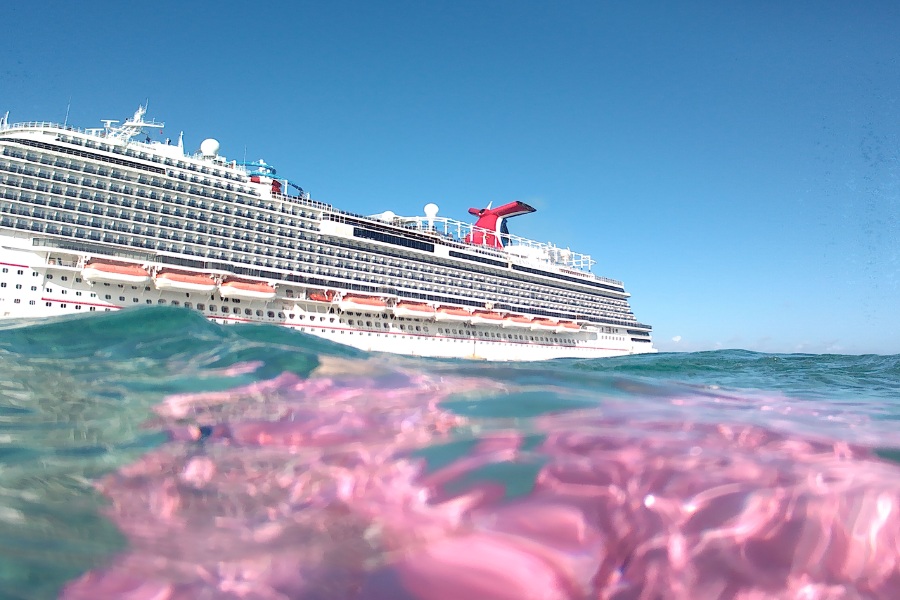 Grand Turk, the capital island and jewel of the Turks and Caicos Islands, is renowned for its unique characteristics that set it apart from other destinations.
Grand Turk, the capital island and jewel of the Turks and Caicos Islands, is renowned for its unique characteristics that set it apart from other destinations.
- Clear blue waters: Grand Turk is surrounded by an ocean with an incredibly vivid turquoise color, presenting an enchanting underwater world that attracts divers and snorkelers worldwide.
- Rich history: The island is steeped in history, dotted with colonial-era Bermudian architecture, and is home to the Turks and Caicos National Museum.
- Friendly donkeys: It's not uncommon to see free-roaming donkeys casually strolling down the streets, a charming spectacle that further adds to the island’s unique character.
- Magnificent salt ponds: The island's interior is dotted with salt ponds, a reminder of the once booming sea salt industry, and now a haven for flamingos and other bird species.
- World-class diving sites: With the third-largest coral reef system in the world, the waters around Grand Turk provide an unforgettable diving experience.
- Stunning white beaches: Grand Turk boasts breathtakingly beautiful beaches with powdery white sand, perfect for a relaxing retreat. Natural beauty, rich history, and unique local character make Grand Turk a truly special destination
Where is Grand Turk?
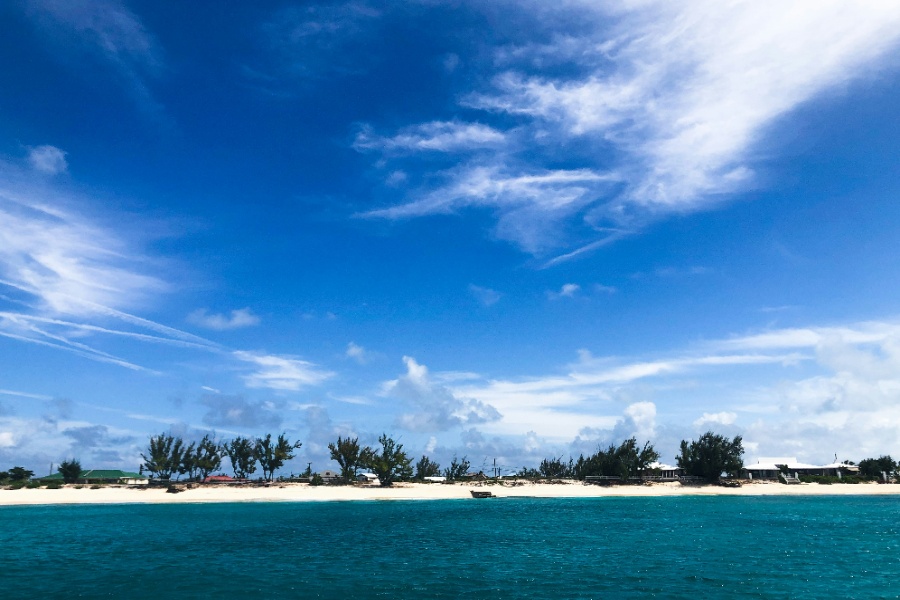 Grand Turk is located in the Atlantic Ocean, southeast of the Bahamas and north of the Dominican Republic, as part of the Turks and Caicos Islands, a British Overseas Territory. It is the easternmost and is one of the smallest islands in the Turks and Caicos archipelago. The island, spanning just under seven long and 1.5 miles wide, is known for its serene atmosphere, Bermudan British architecture, and beautiful coastlines. Its geographical location and unique attributes create a tropical paradise that is both captivating and tranquil.
Grand Turk is located in the Atlantic Ocean, southeast of the Bahamas and north of the Dominican Republic, as part of the Turks and Caicos Islands, a British Overseas Territory. It is the easternmost and is one of the smallest islands in the Turks and Caicos archipelago. The island, spanning just under seven long and 1.5 miles wide, is known for its serene atmosphere, Bermudan British architecture, and beautiful coastlines. Its geographical location and unique attributes create a tropical paradise that is both captivating and tranquil.
The History of Grand Turk
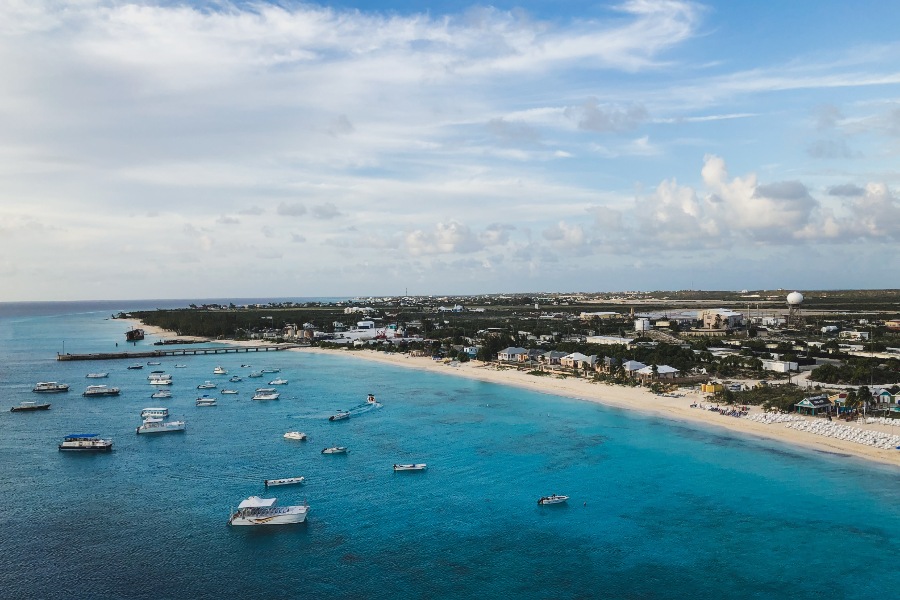 The rich history of Grand Turk is as captivating as its natural beauty. Let's take a journey through this island's timeline, from its earliest known inhabitants to the present day: Pre-Columbian era The first inhabitants of Grand Turk were the indigenous Lucayan or Taino people, who lived on the island from as early as 700 AD. These early settlers were skilled farmers and fishers. Columbus' Arrival (1492) Christopher Columbus is believed to have first set foot in the "New World" on Grand Turk during his voyage in 1492, though this claim is still a subject of debate among historians. European Colonization (17th Century) The island experienced a period of European colonization in the 17th century, primarily by the British and the Bermudians. Salt Industry (1678-1964) For nearly 300 years, starting from 1678, the island's economy was heavily dependent on sea salt production. The remains of the salt pans can still be seen today. US Military Base (1950-1981) The United States established a missile tracking base on Grand Turk during the Cold War, bringing significant economic benefits to the island. Tourism Industry (1960s - Present) Today, The island's economy relies heavily on tourism, with its beautiful beaches, clear waters, and vibrant coral reefs attracting visitors from around the world. This historical journey, from native inhabitants to European colonization and onwards to the modern day, shapes the unique and diverse culture of Grand Turk, making it a compelling destination for history enthusiasts and nature lovers alike.
The rich history of Grand Turk is as captivating as its natural beauty. Let's take a journey through this island's timeline, from its earliest known inhabitants to the present day: Pre-Columbian era The first inhabitants of Grand Turk were the indigenous Lucayan or Taino people, who lived on the island from as early as 700 AD. These early settlers were skilled farmers and fishers. Columbus' Arrival (1492) Christopher Columbus is believed to have first set foot in the "New World" on Grand Turk during his voyage in 1492, though this claim is still a subject of debate among historians. European Colonization (17th Century) The island experienced a period of European colonization in the 17th century, primarily by the British and the Bermudians. Salt Industry (1678-1964) For nearly 300 years, starting from 1678, the island's economy was heavily dependent on sea salt production. The remains of the salt pans can still be seen today. US Military Base (1950-1981) The United States established a missile tracking base on Grand Turk during the Cold War, bringing significant economic benefits to the island. Tourism Industry (1960s - Present) Today, The island's economy relies heavily on tourism, with its beautiful beaches, clear waters, and vibrant coral reefs attracting visitors from around the world. This historical journey, from native inhabitants to European colonization and onwards to the modern day, shapes the unique and diverse culture of Grand Turk, making it a compelling destination for history enthusiasts and nature lovers alike.
Visiting Grand Turk Today
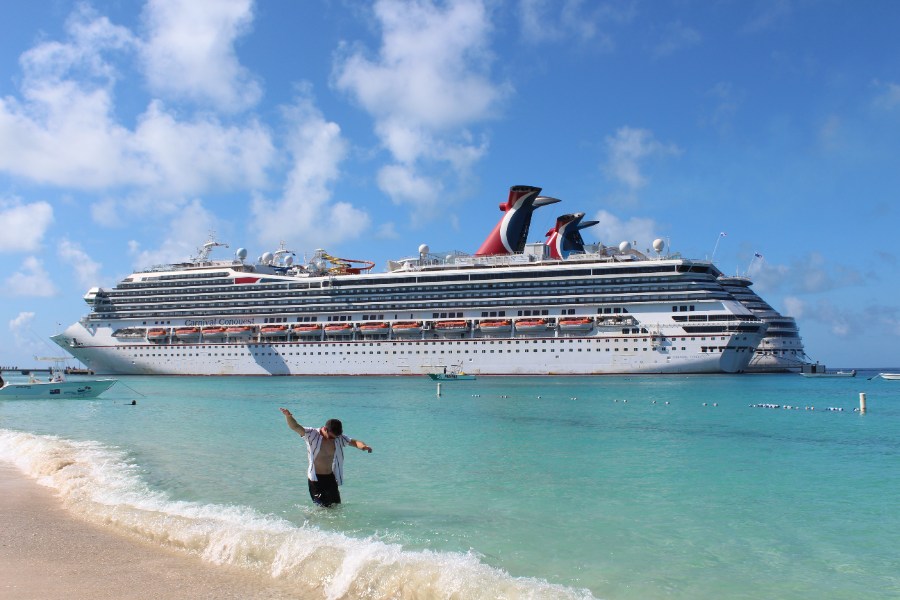 Today, Grand Turk continues to embrace its rich history while simultaneously catering to the needs and interests of modern travelers. Below, we'll explore what this enchanting island offers to its visitors today and how you can best experience its natural beauty and cultural heritage.
Today, Grand Turk continues to embrace its rich history while simultaneously catering to the needs and interests of modern travelers. Below, we'll explore what this enchanting island offers to its visitors today and how you can best experience its natural beauty and cultural heritage.
When to Visit Grand Turk
With its rich history and stunning natural beauty, Grand Turk is a must-visit destination for travelers. However, to make the most of your visit, it's important to plan your trip keeping in mind the weather and local events. Let's discuss the best times to visit Grand Turk and what you can expect during those periods.
- For beach-goers: The best time to visit Grand Turk for beach activities is between December and March. During these months, the weather is warm, and rainfall is minimal, perfect for swimming, snorkeling, or just relaxing by the beach.
- For history enthusiasts: Grand Turk's rich history can be explored year-round. However, the drier months between December and April might offer more comfortable conditions for visiting outdoor historical sites.
- For whale-watchers: The great migration of humpback whales takes place from late January to early April, making it an ideal time for whale-watching tours.
- For diving enthusiasts: Dive enthusiasts might prefer the summer months (May to October) when visibility underwater can exceed 100 feet. However, all times of year are great for diving in Grand Turk.
- For budget-conscious visitors: June through November, also known as the off-peak season, offer lower rates on accommodations and flights. Be aware this period coincides with the Atlantic hurricane season, so it's best to watch weather forecasts.
What You'll See When You Arrive at Grand Turk
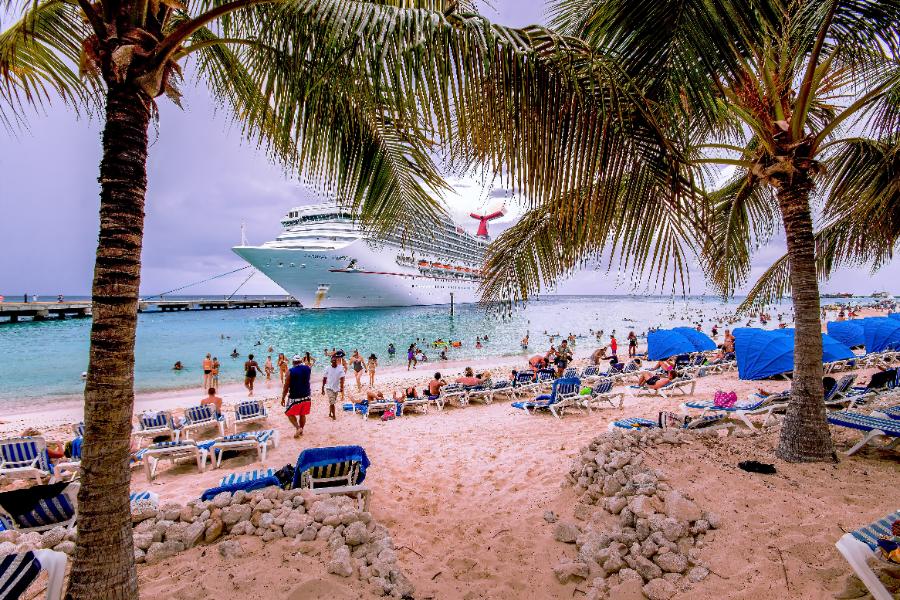 Upon arrival at Grand Turk, you'll be greeted with many awe-inspiring sights and historic landmarks. Some must-visits include:
Upon arrival at Grand Turk, you'll be greeted with many awe-inspiring sights and historic landmarks. Some must-visits include:
- Grand Turk Lighthouse: This historic lighthouse, perched on the northern tip of the island, offers breathtaking panoramic views of the surrounding turquoise sea.
- Turks and Caicos National Museum: Situated in the historic Guinep House, this museum showcases a fascinating array of exhibits that delve into the island's history and prehistory, including the story of the Molasses Reef Wreck, the oldest European shipwreck discovered in the Western Hemisphere.
- Governor's Beach: This is one of the most beautiful beaches on the island, ideal for swimming, snorkeling, or simply lounging on its powdery white sands.
- Columbus Landfall National Park: Believed to be the site where Columbus first made landfall in the New World, this park offers beautiful beaches and vibrant reefs for snorkeling. These attractions provide a taste of the natural beauty and rich history that make Grand Turk a unique and captivating destination.
Staying Safe & Fitting In While Visiting Grand Turk
While Grand Turk is generally considered a safe destination, you should keep a few safety guidelines and local customs in mind to ensure a trouble-free trip.
- Respect the environment: The island has several protected species and habitats. Avoid touching or disturbing wildlife; never take shells, coral, or other natural souvenirs from the beaches or sea.
- Sun safety: The Caribbean sun can be intense. Regularly apply a reef-safe sunscreen, wear a hat, and stay hydrated.
- Respect local customs: The people of Grand Turk are friendly and welcoming but appreciate respect for their customs and way of life. Dress modestly when away from the beach, and always ask permission before taking photos of locals.
- Emergency Services: In an emergency, dial 911 for immediate assistance. The island's main hospital, Cockburn Town Medical Centre, is equipped to handle most emergencies. Remember, the key to a memorable vacation is to respect the places you visit and the people who live there. By following these guidelines, you'll help preserve the beauty and charm of Grand Turk for future generations.
Grand Turk Weather & Climate
 Grand Turk enjoys a tropical climate characterized by hot, humid summers and mild winters. The island experiences its warmest weather between May and September, with temperatures often reaching the mid-80s°F. During these months, you might also encounter brief, intense rain showers, but these typically pass quickly and give way to sunshine. From October to April, the climate cools slightly, offering more comfortable temperatures in the 70s°F. Be aware that hurricane season spans from June to November; while direct hits are rare, they can occur, so staying informed about potential storms during this period is advised. Always check the current weather forecast before your trip to pack accordingly.
Grand Turk enjoys a tropical climate characterized by hot, humid summers and mild winters. The island experiences its warmest weather between May and September, with temperatures often reaching the mid-80s°F. During these months, you might also encounter brief, intense rain showers, but these typically pass quickly and give way to sunshine. From October to April, the climate cools slightly, offering more comfortable temperatures in the 70s°F. Be aware that hurricane season spans from June to November; while direct hits are rare, they can occur, so staying informed about potential storms during this period is advised. Always check the current weather forecast before your trip to pack accordingly.
Getting To & Around Grand Turk
 The easiest way to reach Grand Turk is by flying into JAGS McCartney International Airport (GDT), which offers daily flights from Providenciales and other major Caribbean hubs. From there, taxis and rental cars are readily available for transportation around the island. Once on Grand Turk, many visitors choose to explore the island's sights and attractions by foot or bicycle, taking in the relaxed pace and local charm. Rental cars are also available for those who prefer to have their own transportation, and there are several car rental agencies located near the airport. Grand Turk Island offers an immersive tropical experience with its warm climate, easy accessibility, and charming local culture. Whether exploring by foot, bicycle, or car, every visitor is sure to discover the unique beauty that makes Grand Turk a truly unforgettable destination.
The easiest way to reach Grand Turk is by flying into JAGS McCartney International Airport (GDT), which offers daily flights from Providenciales and other major Caribbean hubs. From there, taxis and rental cars are readily available for transportation around the island. Once on Grand Turk, many visitors choose to explore the island's sights and attractions by foot or bicycle, taking in the relaxed pace and local charm. Rental cars are also available for those who prefer to have their own transportation, and there are several car rental agencies located near the airport. Grand Turk Island offers an immersive tropical experience with its warm climate, easy accessibility, and charming local culture. Whether exploring by foot, bicycle, or car, every visitor is sure to discover the unique beauty that makes Grand Turk a truly unforgettable destination.
All of our content at Caribbean Tourbase is written by experienced travel writers who have visited all of the locations we recommend. And our review board of local tourism experts ensure that all the information we provide is accurate, current and helpful
